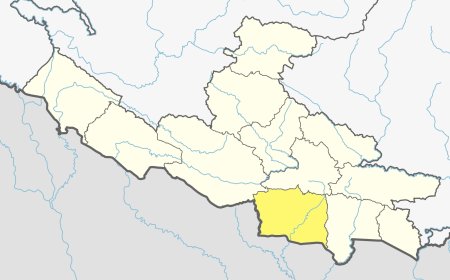Maximizing Your Online Presence with Effective SEO Strategies
Increase your website's visibility and attract more potential customers with our effective SEO strategies. Learn how to optimize your website for search engines today.

SEO, or search engine optimization, is a critical component of any digital marketing strategy. It involves optimizing your website and online presence to improve your search engine rankings and attract more organic traffic. In this article, we will cover the key sub-topics of SEO and provide tips on how to effectively implement these strategies to maximize your online presence.
Keyword Research and Optimization
Keyword research and optimization is one of the most important aspects of effective SEO strategies. The purpose of keyword research is to identify the words and phrases that people use when searching for products or services related to your business. By optimizing your website with these keywords, you can improve your visibility in search engine results pages (SERPs) and increase the likelihood that potential customers will find your website.
To maximize your online presence with effective SEO strategies, consider the following points for keyword research and optimization:
-
Identify your target audience
Before you start your keyword research, it's important to know who your target audience is and what they are searching for. This will help you determine which keywords and phrases to target in your optimization efforts. -
Use keyword research tools
There are several free and paid tools available that can help you identify relevant keywords for your website. Google Keyword Planner and SEMrush are two popular examples. -
Look for long-tail keywords
Long-tail keywords are longer, more specific phrases that tend to be less competitive and can drive targeted traffic to your website. -
Incorporate keywords into website content
Once you have identified relevant keywords, it's important to incorporate them into your website's content. This includes using them in your title tags, meta descriptions, header tags, and throughout the body of your pages. -
Optimize for keyword density
Be mindful of keyword density when incorporating keywords into your content. Overusing keywords (known as "keyword stuffing") can actually harm your SEO efforts and negatively impact your search engine rankings.
By following these best practices for keyword research and optimization, you can improve your website's visibility in search results and attract more targeted traffic to your site.
On-page Optimization
On-page optimization refers to the elements on your website that can be optimized for search engines and search engine users. These elements include title tags, meta descriptions, header tags, and more. By optimizing these elements, you can improve your website's relevance and credibility in the eyes of search engines, and make it easier for potential customers to find and understand your site.
To maximize your online presence with effective SEO strategies, consider the following points for on-page optimization:
-
Write descriptive and compelling title tags
Your title tag is one of the most important on-page elements, as it tells search engines and users what your page is about. Make sure your title tags are descriptive and compelling and include your target keywords. -
Craft compelling meta descriptions
Your meta description is a short summary of your page's content that appears in search engine results. Make sure your meta descriptions accurately reflect your page's content and include your target keywords. -
Use header tags effectively
Header tags (H1, H2, H3, etc.) help structure your content and make it easier for both search engines and users to understand. Make sure your header tags are used consistently and effectively throughout your site. -
Make sure your website is easy to navigate
Your website's navigation should be clear and intuitive, so that both search engines and users can easily find and access your content. -
Optimize images and other multimedia
Make sure that your images and other multimedia elements have descriptive and optimized file names, alt tags, and captions. This will help improve your website's accessibility and user experience.
By following these best practices for on-page optimization, you can improve your website's visibility and relevance in search results, and provide a better user experience for your visitors.
Content Creation and Optimization
Content creation and optimization are crucial components of an effective SEO strategy. Your content should be well-written, relevant, and optimized for both search engines and users. By creating high-quality content that engages and informs your target audience, you can improve your website's visibility, credibility, and engagement.
To maximize your online presence with effective SEO strategies, consider the following points for content creation and optimization:
-
Identify your target audience
Understanding your target audience is essential to creating content that resonates with them. Consider their interests, needs, and pain points, and create content that addresses these topics. -
Conduct keyword research
Keyword research is essential to determining the terms and phrases your target audience is searching for. Use these keywords to create content that is both relevant and optimized for search engines. -
Create high-quality, engaging content
Make sure your content is well-written, informative, and engaging. Use storytelling, case studies, and other techniques to create content that is both relevant and appealing to your target audience. -
Optimize your content for search engines
Optimize your content for search engines by including your target keywords, using header tags, and making sure your content is well-structured and easy to read. -
Promote your content
Promoting your content can help you reach a wider audience and drive more traffic to your site. Consider using social media, email marketing, and other tactics to promote your content.
By following these best practices for content creation and optimization, you can improve your website's visibility and engagement, and provide value to your target audience.
Link Building and Backlinking
Link building and backlinking are essential components of an effective SEO strategy. By building links to your website from other high-quality, relevant sites, you can improve your website's visibility, credibility, and ranking.
To maximize your online presence with effective SEO strategies, consider the following points for link building and backlinking:
-
Focus on quality over quantity
The quality of your backlinks is more important than the quantity. Focus on building links from high-quality, relevant sites, rather than trying to acquire as many links as possible. -
Create high-quality content
High-quality content is more likely to be shared and linked to. By creating well-written, informative, and engaging content, you can increase your chances of earning high-quality backlinks. -
Reach out to influencers and thought leaders
Influencers and thought leaders in your industry can be a valuable source of backlinks. Consider reaching out to these individuals and offering to guest post on their blog or participate in a joint project. -
Use social media
Social media is a powerful tool for building backlinks. Share your content on social media and engage with your followers to increase the visibility of your content and earn backlinks. -
Monitor your backlinks
Regularly monitor your backlinks to ensure they are high-quality and relevant. Remove any low-quality or spammy backlinks, as these can harm your website's ranking.
By following these best practices for link building and backlinking, you can improve your website's visibility, credibility, and ranking, and establish yourself as a thought leader in your industry.
Mobile Optimization and Responsive Design
Mobile optimization and responsive design are critical components of an effective SEO strategy in today's digital age, where the majority of online traffic comes from mobile devices. Optimizing your website for mobile devices can help improve your website's ranking, user experience, and conversion rates.
To maximize your online presence with effective SEO strategies, consider the following points for mobile optimization and responsive design:
-
Make your website responsive
A responsive website adjusts its layout and design to fit the screen size of the device being used, providing an optimal user experience. This is important because search engines favor mobile-friendly websites, and users are more likely to leave a website if it is not optimized for mobile devices. -
Use mobile-friendly design elements
Use design elements such as large buttons, simple navigation, and clear call-to-actions to make your website easy to use on mobile devices. -
Optimize your website's load time
Website load time is a critical factor in mobile optimization. The faster your website loads, the better your website's user experience and search engine ranking will be. -
Make sure your website is accessible
Ensure that your website is accessible to users with disabilities by using alternative text for images, clear headings, and descriptive link text. -
Monitor your website's performance on mobile devices
Regularly monitor your website's performance on mobile devices, using tools such as Google's Mobile-Friendly Test and PageSpeed Insights.
By following these best practices for mobile optimization and responsive design, you can improve your website's ranking, user experience, and conversion rates, and reach a wider audience with your online presence.
Local SEO and Google My Business Optimization
Local SEO and Google My Business optimization are critical components of an effective SEO strategy for businesses that serve a local audience. Optimizing your local presence can help improve your search engine ranking and visibility, attract more local customers, and increase your online credibility and trust.
To maximize your online presence with effective SEO strategies, consider the following points for local SEO and Google My Business optimization:
-
Claim and verify your Google My Business listing
Google My Business is a free tool that allows businesses to manage their online presence across Google, including search and maps. By claiming and verifying your Google My Business listing, you can ensure that your business information is accurate and up-to-date, and that your business is more easily found by local customers. -
Optimize your business information
Make sure your business information, including your business name, address, phone number, and website URL, is accurate and consistent across all online listings. -
Use keywords in your business information
Use keywords in your business name, description, and other information to help search engines understand what your business does and what products or services you offer. -
Encourage customer reviews
Encourage customers to leave reviews on your Google My Business listing, as positive reviews can improve your search engine ranking and increase your online credibility. -
Use location-based keywords
Use location-based keywords in your website's content, titles, and meta descriptions to help search engines understand that your business serves a local audience.
By following these best practices for local SEO and Google My Business optimization, you can improve your online presence, reach more local customers, and increase your online credibility and trust.
Technical SEO
Technical SEO refers to the technical aspects of optimizing a website to improve its visibility and ranking in search engine results. It involves a variety of techniques to ensure that search engines can easily crawl and index your website, and that your website is optimized for both users and search engines.
To maximize your online presence with effective SEO strategies, consider the following points for technical SEO:
-
Website Speed
Ensure that your website loads quickly, as slow load times can negatively impact your search engine ranking and user experience. -
Crawlability
Ensure that search engines can easily crawl and index your website by using a sitemap and by avoiding common crawl obstacles such as broken links, redirects, and blocked content. -
Mobile-friendliness
Ensure that your website is mobile-friendly, as more and more users are accessing the web from mobile devices. -
URL structure
Ensure that your website's URL structure is clear, concise, and easy to understand, and that it uses descriptive keywords whenever possible. -
Structured data
Use structured data to provide additional information about your website to search engines, such as your business name, address, and phone number. -
HTTPS
Ensure that your website uses HTTPS encryption, as this can improve your security and privacy, as well as your search engine ranking.
By following these best practices for technical SEO, you can improve your online presence, reach more customers, and increase your online credibility and trust.
Analytics and Tracking
Analytics and tracking are essential components of effective SEO strategies, as they help you understand your website's performance, measure your progress, and make data-driven decisions to improve your online presence.
To maximize your online presence with effective SEO strategies, consider the following points for analytics and tracking:
-
Google Analytics
Utilize Google Analytics to track your website's traffic, user behavior, and conversion rates, and to gain insights into your audience and their needs. -
Key Performance Indicators (KPIs)
Define and track key performance indicators (KPIs) such as pageviews, bounce rate, time on site, and conversion rates, to measure the success of your SEO strategies. -
Search Console
Use Google Search Console to track your website's search engine ranking, and to receive alerts about any technical SEO issues that may affect your website's performance. -
Heatmaps and Click Maps
Utilize heatmaps and click maps to understand how users interact with your website and to identify any areas for improvement in user experience and conversion optimization. -
Split Testing
Use split testing to test different versions of your website and to compare the results to find the best performing version.
By using analytics and tracking, you can understand your website's performance, identify areas of improvement, and make data-driven decisions to maximize your online presence and reach more customers with effective SEO strategies.
Social Media Optimization
Social media optimization (SMO) is the process of optimizing your social media presence to drive traffic to your website and increase brand awareness. By integrating social media into your overall SEO strategy, you can improve your online presence and reach more customers.
Here are some points to consider for social media optimization:
-
Consistent Branding
Ensure that your brand's visual identity, tone of voice, and messaging are consistent across all your social media channels. -
Relevant Content
Share relevant, high-quality content that is optimized for each social media platform, and that resonates with your target audience. -
Engagement
Encourage engagement with your followers by responding to comments, asking questions, and sharing user-generated content. -
Paid Social Media Ads
Utilize paid social media ads to reach a wider audience, drive traffic to your website, and increase brand awareness. -
Social Media Metrics
Track and analyze your social media metrics, such as engagement rates, click-through rates, and conversion rates, to measure the success of your social media optimization strategies.
By incorporating social media optimization into your SEO strategies, you can improve your online presence, reach more customers, and drive traffic to your website, ultimately maximizing your online presence.
Ongoing SEO Maintenance and Updates
Ongoing SEO maintenance and updates are crucial for the long-term success of your online presence. As search engines and online technologies continue to evolve, it's important to stay current with the latest best practices and updates.
Here are some points to consider for ongoing SEO maintenance and updates:
-
Monitor search engine algorithms
Regularly monitor updates from search engines, such as Google, to ensure that your website is in compliance with the latest algorithms and ranking factors. -
Regular content updates
Keep your website updated with fresh, relevant content that engages your audience and provides value. -
Track performance and metrics
Regularly track your website's performance and metrics, such as search engine rankings, traffic, and conversion rates, to identify areas for improvement. -
Address technical issues
Regularly check for and address technical issues, such as broken links, slow page load times, and crawl errors, that can negatively impact your website's performance. -
Re-evaluate your strategy
Regularly re-evaluate your SEO strategy to ensure that it is aligned with your business goals and current market trends.
By incorporating ongoing SEO maintenance and updates into your strategy, you can ensure that your website remains relevant, up-to-date, and optimized for search engines, ultimately maximizing your online presence.
In conclusion, maximizing your online presence is essential for the success of your business in today's digital landscape. By implementing effective SEO strategies, you can improve your website's visibility and attract more qualified traffic to your site. The key sub-topics covered in this article, including keyword research and optimization, on-page optimization, content creation and optimization, link building and backlinking, mobile optimization and responsive design, local SEO and Google My Business optimization, technical SEO, analytics and tracking, social media optimization, and ongoing SEO maintenance and updates, are all important components of a comprehensive SEO strategy. By incorporating these strategies and making them a regular part of your overall business plan, you can build and maintain a strong online presence and achieve long-term success.
Frequently Asked Questions (FAQ)
-
What is SEO maximization?
SEO maximization refers to the process of optimizing your website and online presence to the fullest extent possible in order to achieve the highest search engine rankings and attract maximum organic traffic. -
Why is effective SEO important for my digital marketing strategy?
Effective SEO is crucial for your digital marketing strategy because it improves your website's visibility in search engine results, increases organic traffic, and helps you reach your target audience more effectively, ultimately leading to higher conversions and business growth. -
How can I perform keyword research and optimization effectively?
To perform keyword research and optimization effectively, follow these steps:
- Understand your target audience.
- Brainstorm initial keyword ideas.
- Use keyword research tools.
- Assess keyword relevance, search volume, and competition.
- Consider long-tail keywords.
- Analyze competitor keywords.
- Evaluate keyword intent.
- Optimize content with keywords.
- Monitor and refine your keyword strategy.
When picking keywords, choose ones that are relevant to your business, have moderate to high search volume, manageable competition, and align with your target audience's intent.
-
What is on-page optimization and how can it improve my website's visibility?
On-page optimization involves optimizing the elements on your website to improve its relevance and credibility in the eyes of search engines and users. By writing descriptive and compelling title tags, crafting accurate meta descriptions, using header tags effectively, ensuring clear website navigation, and optimizing images and multimedia, you can enhance your website's visibility in search results and provide a better user experience. -
How does content creation and optimization contribute to effective SEO?
Content creation and optimization play a vital role in effective SEO strategies. By creating high-quality, engaging content that is relevant to your target audience and optimized with target keywords, you can improve your website's visibility, credibility, and engagement, ultimately attracting more organic traffic and establishing yourself as an industry authority. -
What is link building and how does it impact SEO?
Link building is the process of acquiring high-quality backlinks from other reputable and relevant websites to your own. Backlinks serve as "votes of confidence" to search engines, indicating that your website is trustworthy and valuable. By focusing on quality over quantity, creating high-quality content, reaching out to influencers and thought leaders, leveraging social media, and monitoring your backlinks, you can improve your website's visibility, credibility, and ranking. -
How does mobile optimization and responsive design affect SEO?
Mobile optimization and responsive design are critical for effective SEO in the mobile-centric digital landscape. Optimizing your website for mobile devices improves your website's search engine ranking, user experience, and conversion rates. By making your website responsive, using mobile-friendly design elements, optimizing load time, ensuring accessibility, and monitoring performance on mobile devices, you can enhance your online presence and reach a wider audience. -
Why is local SEO important, and how can I optimize my Google My Business listing?
Local SEO is essential for businesses targeting a local audience. Optimizing your local presence helps improve your search engine ranking, visibility to local customers, and online credibility. To optimize your Google My Business listing, claim and verify it, ensure accurate and consistent business information, use location-based keywords, encourage customer reviews, and integrate local keywords into your website's content. -
What is technical SEO, and why is it important for my website's visibility?
Technical SEO focuses on optimizing the technical aspects of your website to enhance its visibility and ranking in search engine results. Factors such as website speed, crawlability, mobile-friendliness, URL structure, structured data, and using HTTPS encryption all contribute to improved visibility, user experience, and search engine ranking. -
How can I track and measure the success of my SEO strategies?
Tracking and measuring the success of your SEO strategies is crucial to understanding their impact and making data-driven decisions. Utilize tools like Google Analytics to track organic traffic, user behavior, and conversion rates. Monitor keyword rankings with tools like SEMrush or Moz. Analyze backlink profiles using tools like Ahrefs. Regularly review and analyze the collected data to identify trends, make adjustments, and refine your SEO strategies for optimal results.
What's Your Reaction?





































































































